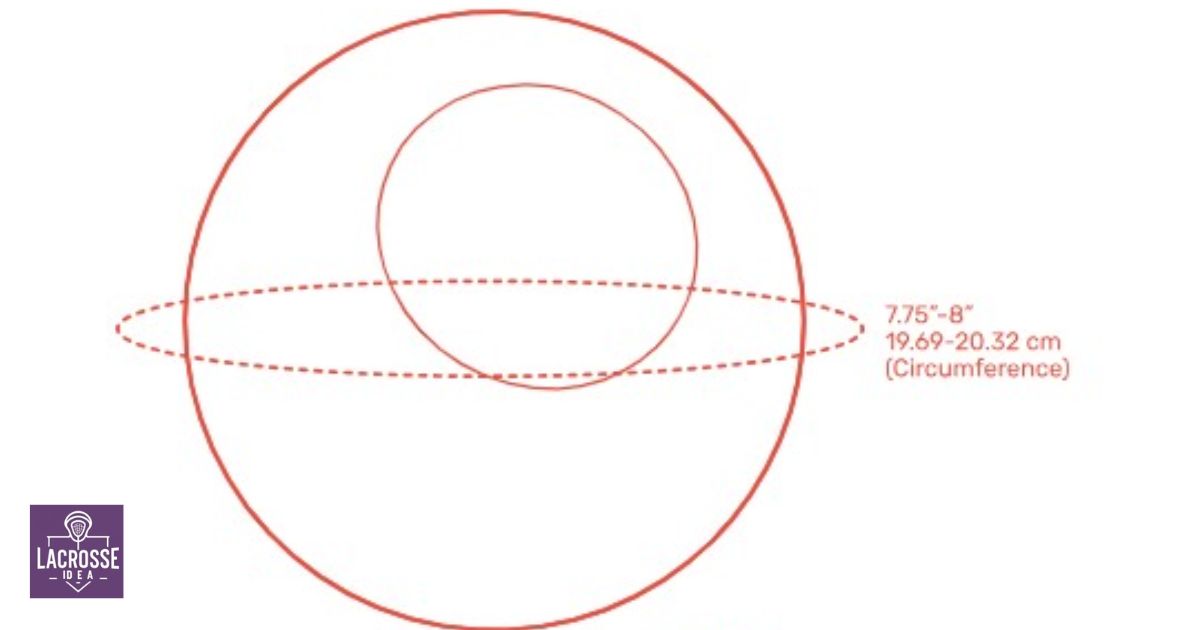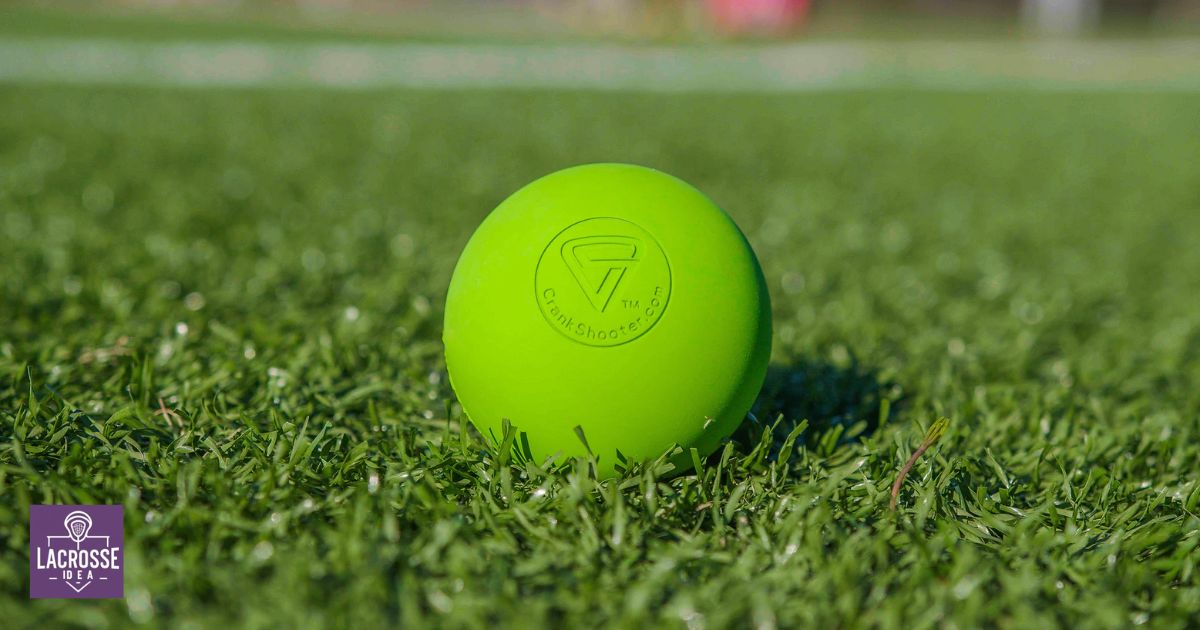In the realm of sports equipment, few objects capture the essence of athleticism quite like a lacrosse ball. With its small, spherical shape and vibrant color, it serves as a symbol of the fast-paced and dynamic nature of the game. This article delves into the physical characteristics, historical evolution, and innovations in design of the lacrosse ball, shedding light on its manufacturing process and the materials used. Prepare to gain a comprehensive understanding of what truly constitutes a lacrosse ball.
Key Takeaways
– Lacrosse balls are made of solid rubber and have a smooth texture.
– The diameter of a lacrosse ball is 2.5 inches.
– The weight of a lacrosse ball is between 5 and 5.25 ounces.
– The physical characteristics of a lacrosse ball, such as its material, size, and weight, impact its performance on the field.
Physical Characteristics
The physical characteristics of a lacrosse ball, such as its size, weight, and texture, greatly impact its performance on the field. Lacrosse balls are typically made of solid rubber and have a diameter of 2.5 inches, which is regulated by the sport’s governing bodies. The weight of a lacrosse ball is standardized to be between 5 and 5.25 ounces.
This specific weight allows players to have precise control over the ball during passing, shooting, and catching. The texture of a lacrosse ball is smooth, providing an optimal grip for the players. This enables them to handle the ball more effectively and perform accurate maneuvers. Overall, the physical characteristics of a lacrosse ball play a crucial role in determining the game’s dynamics and the level of skill required to excel on the field.
Historical Evolution Of Lacrosse Balls
As we explore the historical evolution of lacrosse, it becomes evident how the game has transformed over time, adapting to diverse cultural influences and evolving into the dynamic sport we know today. Lacrosse has a rich history that dates back centuries, with origins rooted in Indigenous communities in North America. The game was initially played with wooden sticks and a ball made of deerskin or carved wood.
Over time, as lacrosse gained popularity and spread to different regions, the equipment and rules underwent significant changes. The introduction of synthetic materials led to the development of lightweight sticks and rubber lacrosse balls, which improved the speed and agility of the game. Today, lacrosse is played at various levels, from youth leagues to professional tournaments, and continues to evolve and grow as new techniques and strategies are incorporated into the game.
Innovations In Design
Synthetic materials have revolutionized lacrosse equipment, allowing for the creation of lightweight sticks and rubber balls that have enhanced the game’s speed and agility. These innovations in design have had a profound impact on the sport, making it more dynamic and exciting for players and spectators alike. Here are three ways in which synthetic materials have transformed lacrosse equipment:
1. Lightweight sticks: Traditional wooden lacrosse sticks were heavy and cumbersome, limiting a player’s maneuverability. Synthetic materials such as carbon fiber and aluminum alloys have made it possible to create sticks that are lightweight yet durable, allowing for faster and more precise shots.
2. Rubber balls: The introduction of rubber lacrosse balls has significantly improved the game’s speed. These balls are more resilient and have better bounce, allowing players to execute quick passes and shots with greater accuracy.
3. Enhanced durability: Synthetic materials are more resistant to wear and tear compared to their natural counterparts. This means that lacrosse equipment made from synthetic materials lasts longer, reducing the need for frequent replacements and saving players and teams money in the long run.
Manufacturing Process
During the manufacturing process, various steps are taken to ensure the quality and consistency of lacrosse equipment made from synthetic materials. Lacrosse equipment, such as sticks and protective gear, are commonly made from synthetic materials like carbon fiber, nylon, and polyurethane. These materials are chosen for their durability, flexibility, and lightweight properties, which are essential for high-performance sports equipment. The manufacturing process begins with the selection of high-quality raw materials that meet specific standards.
These materials are then carefully processed and molded into the desired shapes using advanced techniques such as injection molding or compression molding. Quality control checks are conducted at each stage of the manufacturing process to ensure that the lacrosse equipment meets the required specifications and safety standards. This includes testing for strength, flexibility, weight, and overall performance. By following these steps, manufacturers can ensure that lacrosse equipment made from synthetic materials is of the highest quality and provides consistent performance for players.
Materials Used
The selection of materials used in lacrosse equipment is crucial for ensuring optimal performance and player safety. When it comes to lacrosse balls, the choice of material plays a significant role in the overall quality and performance of the ball. Here are the three primary materials used in lacrosse ball manufacturing:
1. Rubber: Rubber is the most common material used for lacrosse balls. It is known for its durability and ability to withstand the rigorous demands of the game. Rubber balls provide consistent bounce and grip, making them ideal for both practice and game play.
2. Synthetic Rubber: Synthetic rubber is a newer material used in lacrosse ball manufacturing. It offers similar characteristics to traditional rubber balls but with enhanced durability and performance. Synthetic rubber balls are often preferred by professional players and teams.
3. Specialty Materials: Some lacrosse balls are made from specialty materials, such as glow-in-the-dark or soft rubber compounds. These balls are used for specific purposes, such as playing in low light conditions or for younger players who require a softer ball.
Technological Advancements
Technological advancements in lacrosse ball design have introduced innovative features that significantly impact the performance of the ball on the field. Modern lacrosse balls incorporate advanced materials and manufacturing techniques, resulting in enhanced durability, grip, and overall playability. The integration of cutting-edge technologies has not only improved the consistency of the ball’s performance but has also influenced player strategies and skill development.
Looking ahead, future trends in lacrosse ball design are likely to focus on further optimizing aerodynamics, incorporating smart technologies for data tracking, and exploring sustainable materials to align with evolving environmental considerations in sports equipment. These advancements underscore the dynamic intersection of technology and tradition within the sport of lacrosse.
Cultural Significance
The lacrosse ball holds profound cultural significance within the sport, embodying a symbol of unity, competition, and tradition. Beyond its functional role in gameplay, the ball often symbolizes the spirit of the game itself, acting as a tangible representation of shared values and community identity.
In various lacrosse-playing communities, rituals and traditions surrounding the ball contribute to a rich cultural tapestry, fostering a sense of camaraderie and continuity. Whether through ceremonial ball-handling practices, symbolic gestures, or community events, the lacrosse ball becomes a focal point for cultural expression, reinforcing the sport’s historical roots and connecting present-day players to a shared heritage.
Conclusion
In conclusion, the lacrosse ball is a small, hard object with a diameter of approximately 2.5 inches. It is typically made of rubber or synthetic materials and is designed to withstand the fast-paced nature of the game. Over the years, the lacrosse ball has evolved in terms of its design and manufacturing process, resulting in improved performance and durability. Further research into the development and innovations of lacrosse balls could uncover fascinating insights into the game’s history and future.








